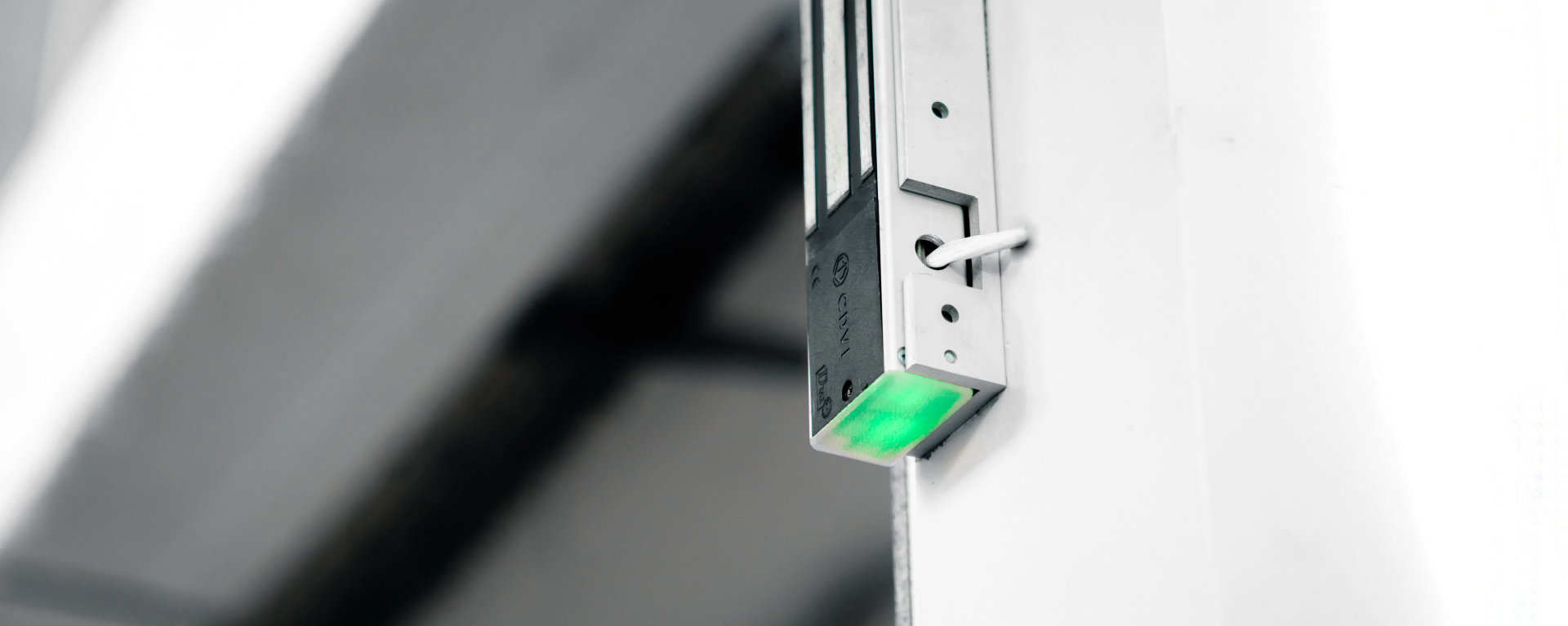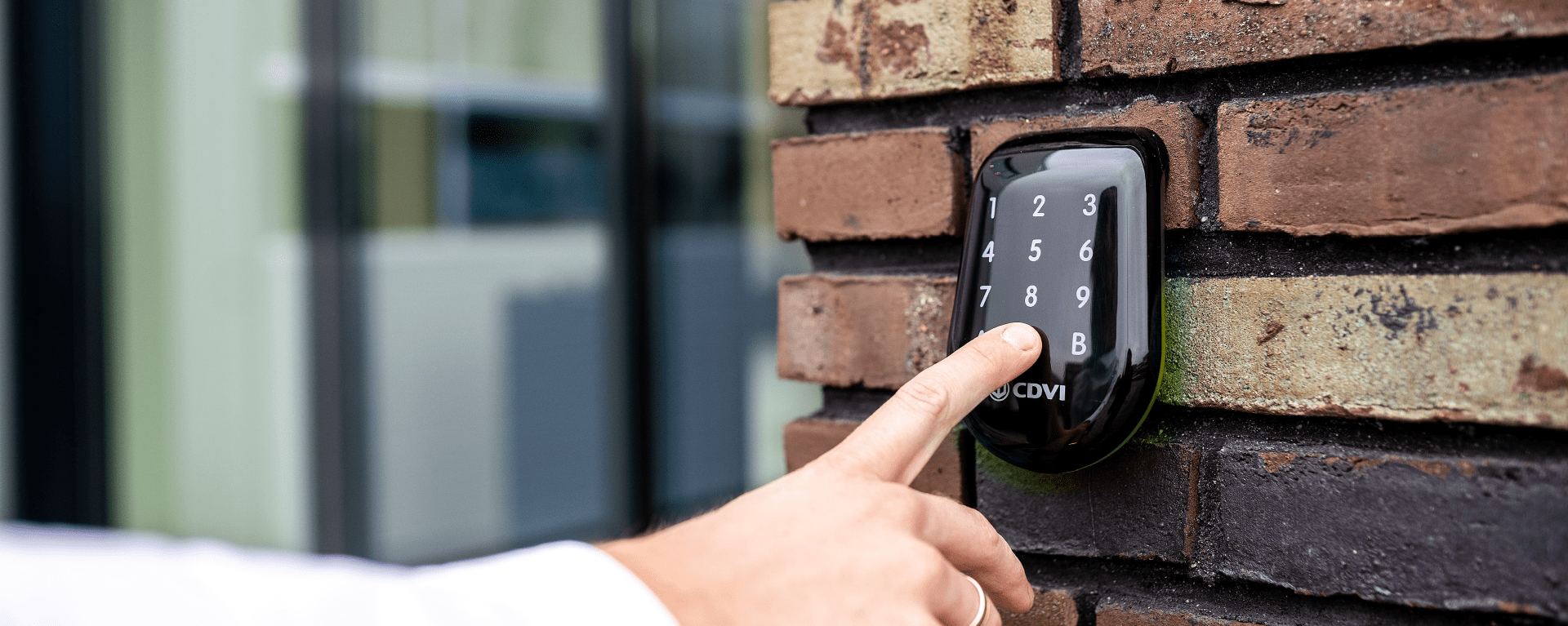What is electronic locking?
Locks are devices that prevent free access. When a lock is secured, some type of mechanism ensures that the door remains closed even if someone attempts to open it. The only way to release the lock and gain access is with the correct key. Most commonly, people are familiar with mechanical locks in their homes. These locks are generally tubular or cylindrical mechanical locks that are operated by inserting and turning a physical corresponding key.
Electronic locks serve the same purpose, but achieve their aims by different means. Instead of manually operating the lock with a key, electronic locks use electricity to hold and release their mechanisms. As with mechanical locks, there are different types of electronic locks. Each type uses a different method to hold the door firmly closed.
What are the types of electronic locks?
Electro-magnetic locks
Electro-magnetic locks use the power of magnetic fields to hold a door closed. An electro-magnet is fitted to the door frame, and a matching armature plate is fitted to the door. When electricity is applied to the magnet, a magnetic field is created. The force of magnetic attraction between the magnet and the armature plate holds the door closed.
Electric strikes
Electric strikes consist of a powered latch and a faceplate. The latch or bolt is fitted into the door leaf, while the faceplate fits into the door frame. Strikes come in two versions – one which locks when electricity is applied (fail safe) and one which unlocks when power is applied (fail secure). When unlocked, the latch or bolt releases from the faceplate and the door can be opened.
Solenoid bolts
Solenoids are a type of electro-magnet. The magnetic force is used to drive or retract a bolt. The bolt is generally fitted into the door leaf, with its matching keeper fitted into the door frame.
Shearlocks
Shearlocks are a type of electro-magnetic lock. In addition to the holding power of the magnet and its armature plate, a shearlock includes a motorised dead-bolt. When power is applied and the magnetic plates are aligned, the bolt slides out of the door and into its keeper in the door frame.

What are the benefits of electronic locking?
Better security
Mechanical locks are mechanically operated and can therefore be mechanically manipulated. Individuals with the right tools and skills can pick locks and gain entry without authorisation. Electronic locks utilise electricity rather than mechanics, and without a physical keyhole, cannot be picked in the same way.
For many mechanical locks, their security relies on a human being remembering to activate and lock them. Such reliance leaves room for human error and greater potential for security breaches. Conversely, electronic locks can be set to automatically re-lock after use.
More control over access
Electronic locks are ideal for use with access control systems. Cutting and issuing physical keys to individuals is expensive, time-consuming, and inefficient. With electronic access control systems, ‘keys’ can be a huge of range of things:
- A code that is entered into a keypad
- An RFID swipe card that is presented to a reader
- The unique patterns on users’ fingerprints
- A Bluetooth signal from a paired smartphone app
- A QR code printed on a keyring tag
- The structure of users’ facial features
Or – a combination of any number of these credentials.

Access control systems are specially designed to make it easy to manage a database of users and their entry permissions. Especially with a networked access control solution, all the users, doors, locks, and credentials can be managed from one central location. Adding a new user, issuing a new card, registering a new fingerprint, giving someone new access rights – it’s all quick and instant.
Moreover, electronic locks in combination with an access control solution contribute to overall better security. It’s easy to lose, steal, or copy a mechanical key. It’s not so easy to acquire a keypad code, someone’s fingerprint, or a swipe card protected by encryption.
Better monitoring and visibility
Electronic locks also offer greater powers of monitoring activities. With the electronic aspect comes the capacity to track the status of the lock at a given time. Some locks include an LED which lights up different colours to indicate whether the door is locked or unlocked. An online access control system, such as ATRIUM, shows the live status of all the connected locks in the system. Security officers therefore benefit from full visibility over their site at all times.
Visual deterrent
Electronic locks enhance security in their own way through the inherent benefits of their technology and mechanisms. However, at the same time, they also improve security by providing a simple visual deterrent to criminals and vandals. Many electronic locks are visible and include LED status indicators. They are also often combined with keypads, card readers, or biometric scanning devices. All these components indicate to potential intruders that the premises is protected and monitored.
At CDVI, we’re committed to producing electronic locks of the highest quality. Our heritage in electronic access control and security goes back to 1985. All our locks are specially designed to be compatible with ATRIUM online access control and our standalone access control solutions. Whether you need fire rated, extra high security, or externally rated locks, we’ve got something for your project.
Learn more today!
